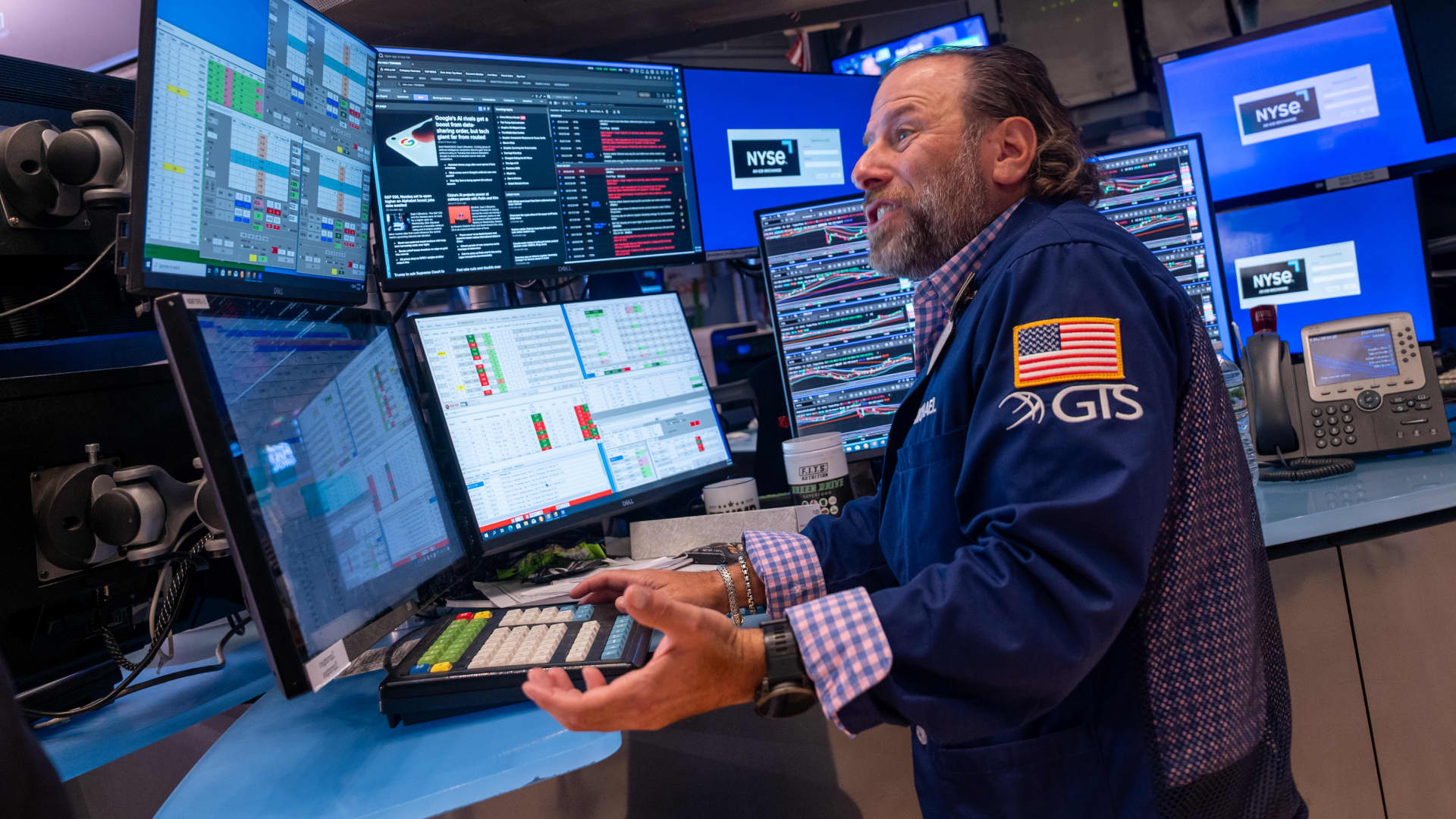(These are the market notes on today’s action by Mike Santoli, CNBC’s Senior Markets Commentator.) Another one of the market’s occasional rethinks of the beloved AI-investment theme strikes some of the heavily owned leaders of the group, pressuring the big-cap indexes but so far sparing the majority of stocks from significant damage. Questions over whether Nvidia ‘s $100 billion pledged investment in OpenAI to fund the development of Nvidia-centric data centers seems to have prompted a round of scrutiny over a possible eventual endgame of overcapacity and overlapping partnerships and vendor relationships. Nvidia and Oracle shedding the most among the big names, while Microsoft ‘s announcement of a self-cooling chip has hit the power-management names such as Vertiv . This action in some crowded, expensive stocks after a long and fruitful rally could simply be a bout of profit-taking and belated seasonal choppiness. The broad trends are quite sturdy, while resulting in a buildup of pent-up selling, rich valuations and some aggressive momentum-chasing in marginal pockets of the market. Nvidia has made no net progress since July 30 alongside plenty of excited chatter around the strength and duration of the AI buildout — perhaps having entered another of its long digestion trading ranges (the last one went on for several months)? Even with the selling among the big-cap growth names, nearly as many stocks are up as down, the inverse of Monday’s action when most stocks fell but pops in Nvidia and Apple pushed the S & P 500 to a half-percent gain. This has been a common rhythm for this market, rotating day by day between narrow and broad breadth days, keeping the index from even as much as a 3% pullback since May while alternately allowing for overheated groups to cool now and then. It’s a positive dynamic so long as it lasts. It suppresses volatility while also lulling traders into a kind of comfort that can bleed into complacency eventually. The CBOE Volatility Index has refused to make new lows with the S & P 500 hitting new highs and has now possibly turned higher from a basing pattern. A sign that hedgers are braced for more erratic action as the stakes rise on the interplay between the economy, the Fed and AI-driven growth. Federal Reserve Chair Jerome Powell elaborated on last week’s press conference remarks in a speech , again highlighting the lack of a free lunch in policy-setting when both employment and inflation data are wide of target levels. Calling policy “moderately restrictive” means no aggressive rate-cutting is likely. Wherever the neutral rate is, we are 25 basis points closer to it than we were a week ago. Still, by handicapping continued elevated inflation readings in months to come while still tacitly penciling in more likely rate cuts, he ratified the markets’ demonstrated willingness to look past inflation risk. Stocks will always be fine with 3%-ish inflation along with a lower rates so long as long-term yields stay well-behaved. So far, this is roughly the setup. One risk flagged by bond-market pros that the markets might be watching with one eye: Friday’s PCE inflation could breach 3%, and the September jobs report (due to be reported a week from Friday) has a strong tendency for upside bounce-back after weak August readings.





